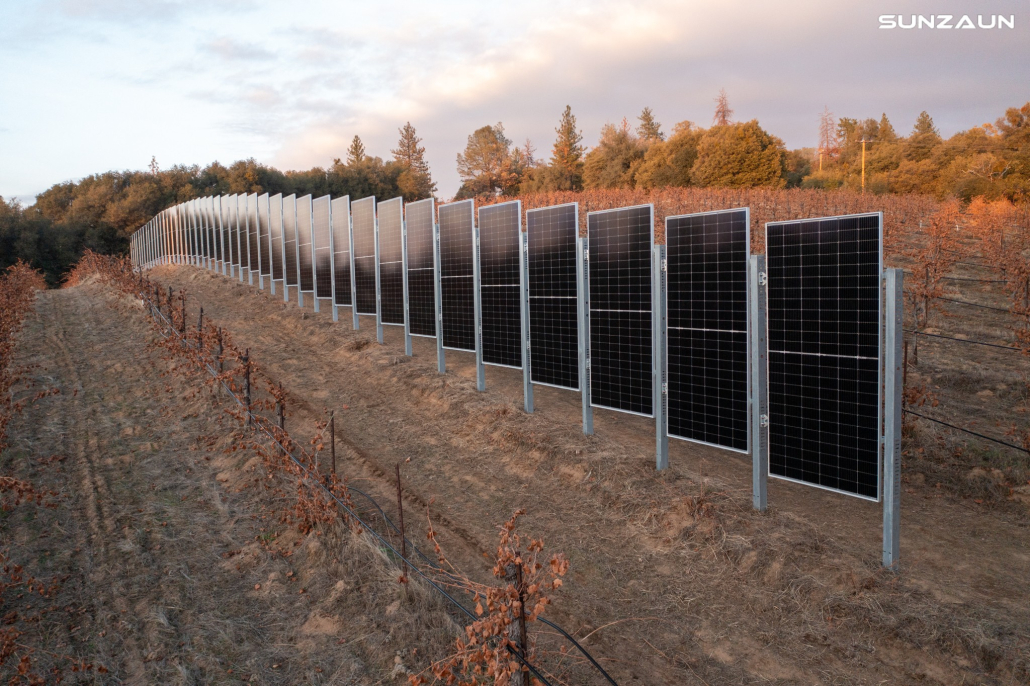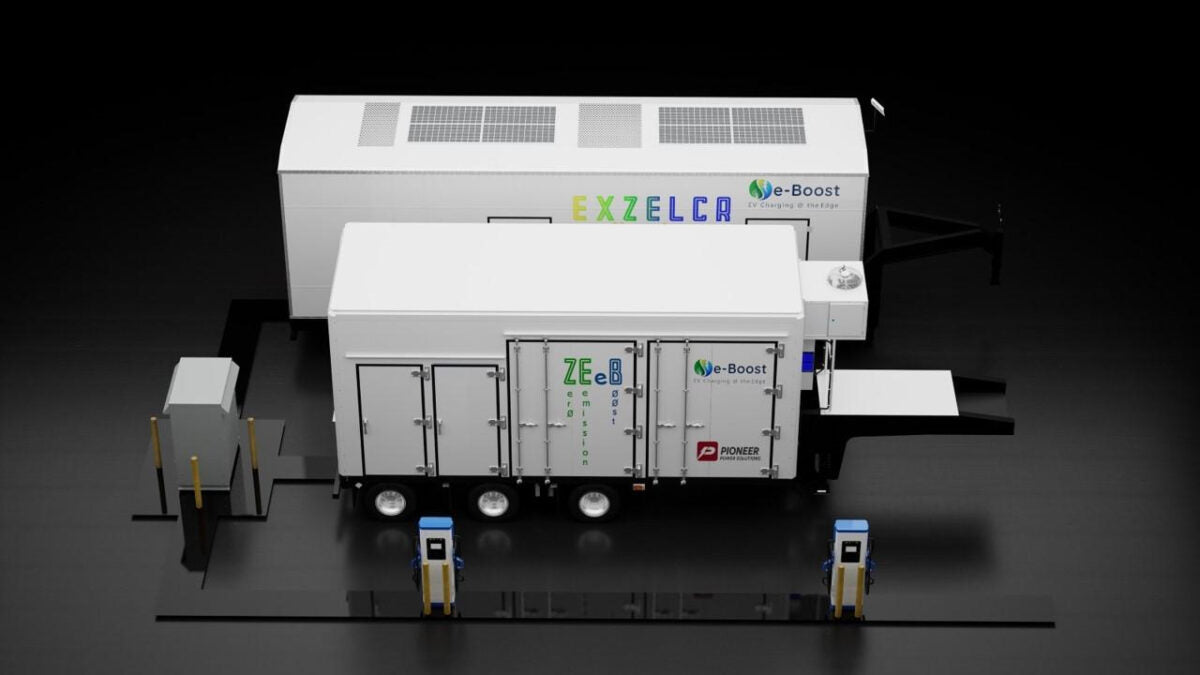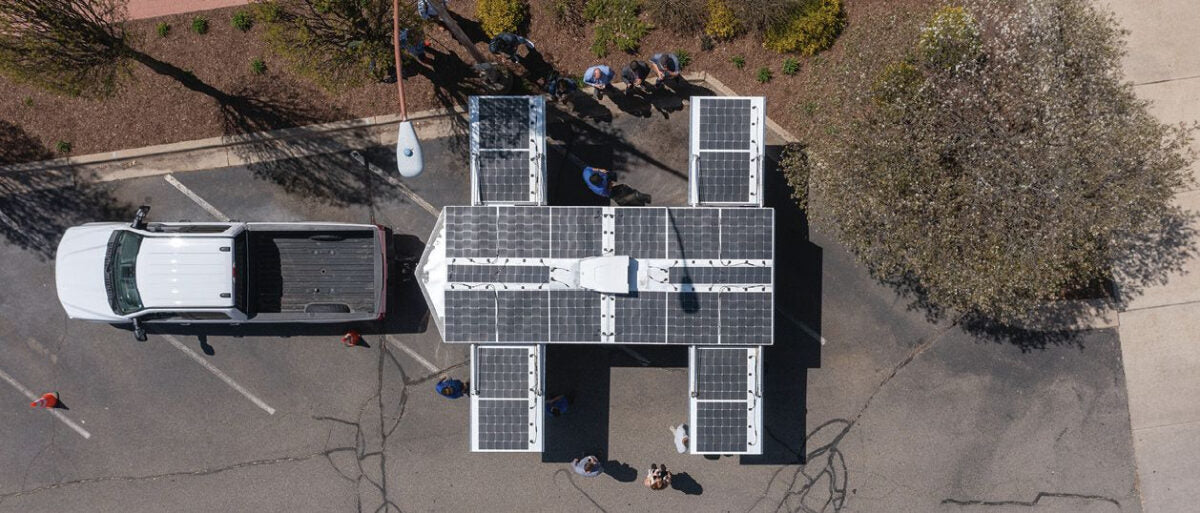https://pv-magazine-usa.com/2024/01/22/vertical-solar-mount-first-of-kind-to-achieve-ul-certification/
Vertical solar mount first of kind to achieve UL certification

Image: Sunzaun
Sunstall Inc. announced that Underwriters Laboratories (UL) certified its vertical PV mounting system, called Sunzaun.
Sunzaun achieved rigorous UL2703 standards, making it the first vertical solar mounting system to achieve such certification for safety and reliability in the United States.
The vertical configuration of the Sunzaun system saves space, allowing for energy production in limited spaces. Sunstall said the system is well-suited for agricultural lands, urban environments and areas with restricted land availability.
The vertical orientation of the panels leads to a grid-serving production curve, avoiding the midday production peak of traditional utility-scale arrays. It has other dual-use benefits, like providing shade to crops and saving irrigation water.
“We are thrilled to announce that our Vertical Solar System has successfully passed UL testing, making it the first of its kind nationwide to comply with the UL2703 standard,” said Helge Birenath, chief executive officer and president, Sunstall, Inc.
The German-designed Sunzaun vertical arrays were installed in 2022 at a Somerset, California winery, demonstrating the dual-use ability vertical PV. The solar array, installed within rows of grapevines, is composed of 43 modules with 450 W each, connected to a microinverter and two batteries.
(Read: “Vertical PV for clean energy and crop production”)
The design uses holes in the module frames to make a simple attachment to two piles, negating the need for a heavy racking system. The bifacial solar modules produce energy on both sides of the vertically oriented array.
In traditional systems designed with a landscape orientation, the rails used to mount panels onto the racking system are often cut to fit the expected panel size. If the size of the panel changes after all other component procurement has been completed, the project may face delays while the rails are reengineered to fit the updated panel size. Sunzaun’s design allows for easy adaptation to a change in panel size by adjusting the distance between each pile. It is also possible to adjust the height of the panels from the ground if needed.
Soiling and operating temperature
A study from Arizona State University observed varying levels of solar energy production losses related to soiling, or dirt and debris on the face of the panels, based on panel tilt. The study found significant differences in soiling related losses related to panel tilt, though the study only tested angles up to 40 degrees, suggesting more studies are needed for vertical PV soiling impacts.
A group of researchers at the Netherlands Organisation for Applied Scientific Research (TNO) has conducted a series of tests and simulations to understand why vertical PV systems tend to provide unexpected yield gains compared to horizontal arrays and have found that vertical installations have much lower operating temperatures.
“Although better than expected performance for vertical installation of bifacial PV has been reported at conferences and workshops, we haven’t seen any publications that show that this is accompanied with a much lower operating temperature than you would expect for free-standing fixed tilt PV with the same total irradiance,” the research’s corresponding author, Bas B. Van Aken, told pv magazine. “These lower operating temperatures have a positive effect on the operating voltage. And thereby on the total energy generation, particularly under high irradiance conditions.”
In the study “Thermal model in digital twin of vertical PV system helps to explain unexpected yield gains,” published in EPJ Photovoltaics, Van Aken and his colleagues explained that the voltage is influenced both by the amount of light and by the temperature of the solar cells. With increasing irradiance conditions, the voltage increases logarithmically, while with increasing temperature, the voltage decreases, typically by 0.3-0.4% per C.
This content is protected by copyright and may not be reused. If you want to cooperate with us and would like to reuse some of our content, please contact: editors@pv-magazine.com.




